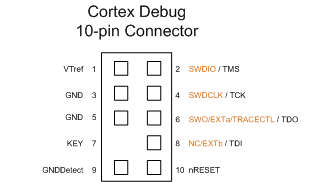@neverdie said in 💬 Raybeacon: nRF52 on-the-go Development Kit:
The F-type trace antenna on the esp8266 esp-12F seemed to be the best all-around solution, so I was previously guessing the same would probably be true for the nRF52 as well.
Well, antenna parameters are relevant only to resonant frequency. As long as it matches 2400-2485MHz it should work just fine.
This one on the photo looks like SWRA117 by TI. I used those from KiCad standard library as a simple drop-in solution and they are quite nice.
Then again, the Fanstel BT840X trace antenna seems to be by far the best so far, and it's bigger than the esp-12F antenna:
Yeah, where reduced size is a must, meandered antennas (like the SWRA117 above) are good compromise to straight inverted F-type antennas. Otherwise a straight IFA might show slightly better efficiency.
I'm guessing maybe part of the reason it does so well is because it has less insertion loss than an externally mounted antenna. So, to your earlier point, putting a BT840X inside a cantenna should easily beat externally mounting it to one.
Placing antenna into a can makes to it about the same thing as acoustic guitar body to sound wave - it helps create standing wave and direct it into one particular direction. This simple trick promises to give +10..+15dBi - about the same gain as a power amplifier.
The difference, of course, in radiation pattern. This actually defines the need: do we need long range connectivity in one direction, or it has to be rather omnidirectional? For the first case - use directional antenna, then shape the beam with a can (cheap) or parabolic reflector (affordable), if still low - amplify. Of course, size matters so a small and simple properly placed reflector would make it too. For the latter case just stick to omnidirectional antenna and amplify.
That said, my best experience to date has been with dipole antennas. They're larger still, but they're also very easy to make. Some people have even hacked them onto nRF24L01's and report much better range. I'm guessing that's at least partly because it compensates for the too small ground plane on those devices:
Bigger ground plane usually promises better performance indeed and the module looks very small.
But to be honest, I don't know will the dipole improve anything or not. The nRF24 has balanced antenna feed line so at least it should be possible to connect dipole directly to the module (which is not the case with nRF5). But in order to do this all extra networks must be cut out, and even in this case it's very unlikely the antenna and RF output will match each other. Assuming that both the DIY dipole and the Cypress MIFA are omnidirectional antennas I don't think that the detuned and very likely out of band dipole would beat the original design, sorry.
Luckily, at 2.4ghz the antennas wire length isn't as awkward as it is at sub-ghz. Maybe it could be shrunk down using two squiggle traces instead of just one?
The RF output has 0dBm. Next, the default omnidirectional antenna tries to radiate it with 0dBi gain. Now it's possible either amplify, or shape the beam, or do both. A directional antenna (including reflector as part of it) could help gain up to +20dBi in front (which roughly means you'll have -10dBi in other directions). Amplifier could add +15dBm more in all directions. So it depends.
IMHO the options (inclusive) are as follows:
- Use reflector. Pros: high gain, cheap. Cons: size. Note: results in directed antenna (which may be both good and bad).
- Replace antenna. Pros: better radiation pattern. Cons: needs tuning.
- Install amplifier. Pros: immediate tx/rx gain boost. Cons: extra cost, needs tuning, may drain battery on low-powered solutions.
![]()


